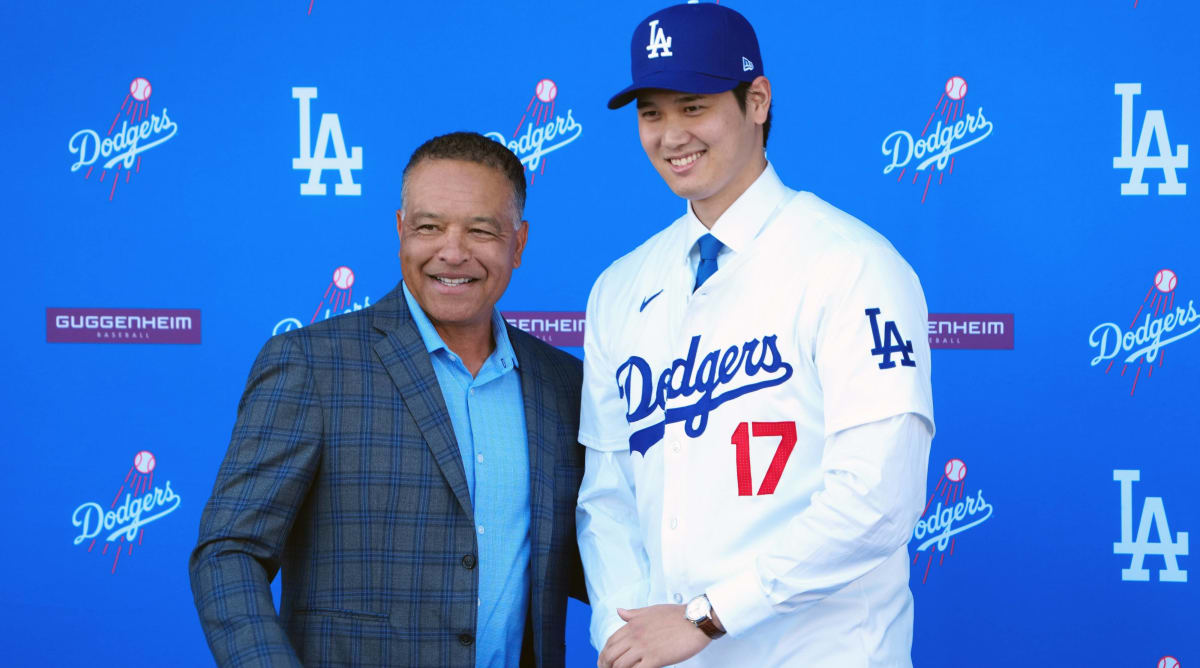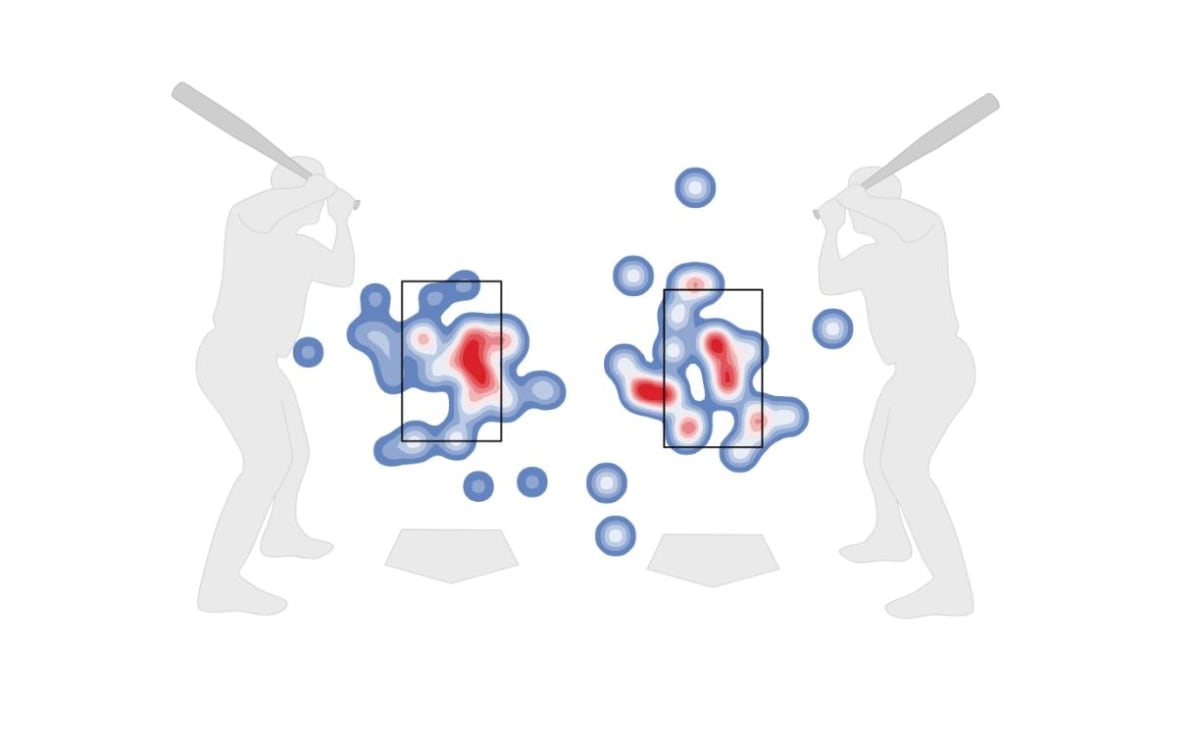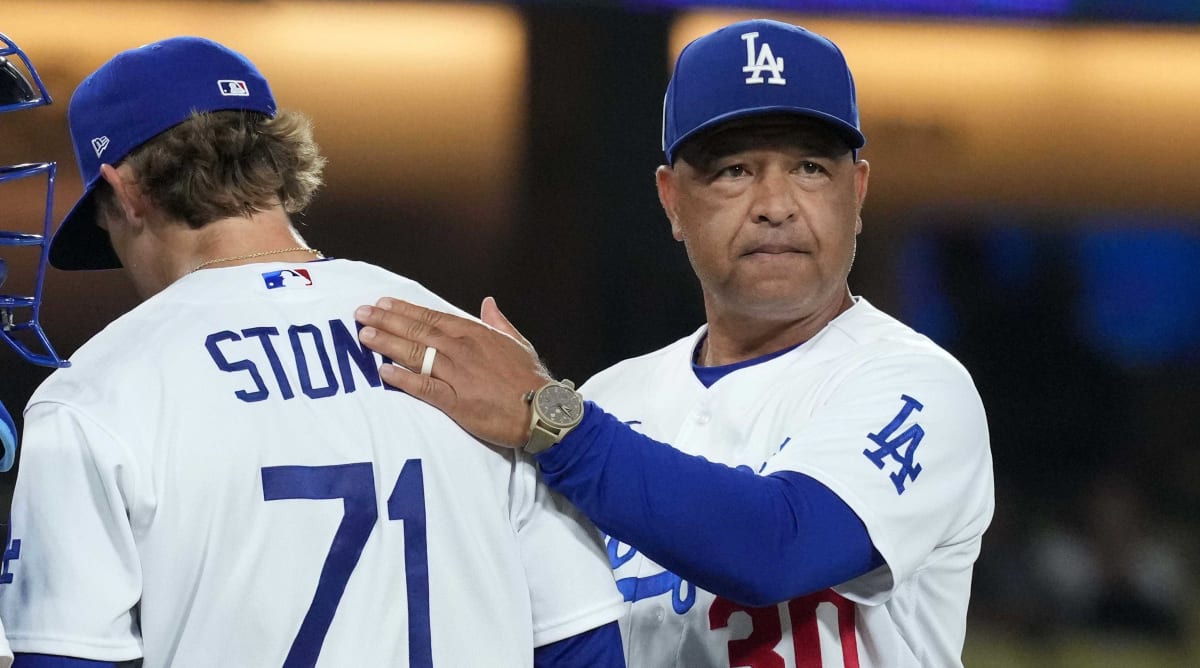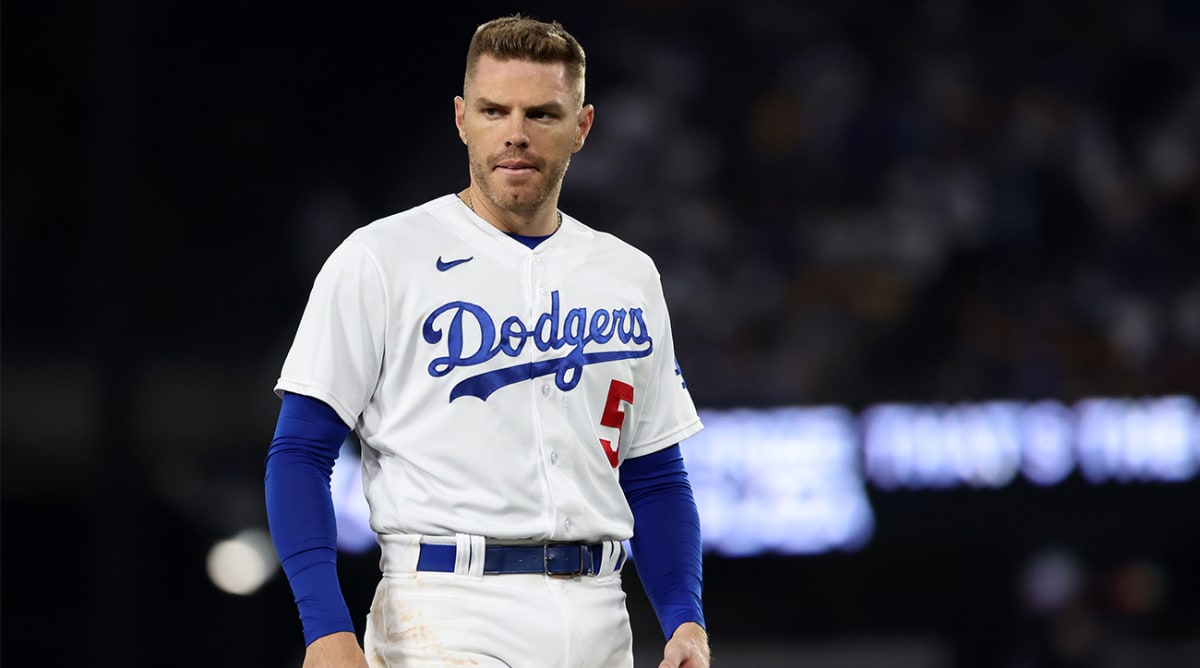The Los Angeles Dodgers just spent $1.07 billion on free agents. To a 100-win team they added the best player on the planet, Shohei Ohtani; one of the best pitchers on the planet, Yoshinobu Yamamoto; pitcher Tyler Glasnow and outfielders Teoscar Hernández and Manuel Margot while returning a healthy Walker Buehler to the rotation.
And yet they are no lock to win the World Series. Put it this way: If you have the choice between the Dodgers and the field, the safer pick is the field.
Make no mistake, the Dodgers are the best team in baseball. (Yes, better than the Braves.) They are good for baseball: a star-studded team in a major market with massive expectations and the rare team that sends a bona fide name-brand starting pitcher to the mound most every night.

Kirby Lee/USA Today network
But a lock? No way. What can go wrong? The postseason. Start with this: In the 26 full seasons of the wild-card era, the team with the most wins has won the World Series only seven times. What was the rule is the exception. Stop bellyaching about the playoff format and embrace the unpredictability of the new world.
Maybe you’re in the camp of disliking the Dodgers because they not only spend a ton of dough but also because they benefit from players taking less money to play there. If so, you want more reasons to believe why they won’t win. So, here you go.
1. Game-planning and coaching matter more in the postseason
In the NLDS last year, the 84-win Arizona Diamondbacks shut down the 100-win Dodgers, the game’s second-highest scoring team. The D-Backs held Los Angeles to a .177 batting average and one home run. How did they do it? This is where coaches can have a big impact. Arizona pitching coach Brent Strom and strategist Dan Haren are two of the best at what they do.
To throttle the Dodgers, Arizona pitchers went on the offensive. They pumped in quality first-pitch strikes and attacked with fastballs. Check out how the strategy changed in the postseason from what Arizona showed the Dodgers in the regular season.
D-Backs Pitching vs. Dodgers
| Fastballs | First-pitch strikes | |
|---|---|---|
Regular Season |
45% |
51% |
Postseason |
52% |
69% |
Teams typically throw slightly more fastballs in the postseason as rotations and bullpens shorten to favor more velocity (the bump last year was 47.6% to 50.6%; cutters not included). Arizona took it a bit further.
The D-Backs used well-located fastballs to gain count leverage. Here are the heat maps of their first-pitch fastballs to Los Angeles’s right- and left-handed hitters. Note how they dotted the outside lane, a pitch most hitters are going to concede on 0–0 counts.

The Dodgers hit .214 on first pitches, down from .371 in the regular season. Overall, they hit .170 against Arizona’s fastballs. Credit Arizona for forging a winning plan and executing it.
I’ve seen the 2022 Astros take out the Yankees in four straight ALCS games with 43% breaking pitches. I’ve seen the ’08 Phillies win the World Series with 21% off-speed pitches. Matchups and game plans matter.
2. The Dodgers don’t rely on starting pitchers to win postseason games
Los Angeles is not alone here. The game has regressed so far in terms of starting pitcher workload that no starter has lasted eight innings in the past 180 postseason starts. Last postseason only two of 82 starters were permitted to throw more than 100 pitches—none more than the 105 by Pablo López of the Minnesota Twins.

Kirby Lee/USA TODAY Sports
But the Dodgers are on the more aggressive end when it comes to turning quickly to the bullpen. Los Angeles manager Dave Roberts has managed 84 postseason games. In those 84 games his starting pitchers have:
- A 22–25 record
- Only 20 quality starts
- Thrown fewer than six innings 71% of the time
- Worked three full times through a lineup just six times, none in the past 35 games.
Think about their rotation this year: great stuff, but caution flags galore. Yamamoto, Buehler, Glasnow and Bobby Miller have thrown 162 innings in a season only six times among 22 combined years. Yamamoto is adapting to a longer season with more travel. Glasnow has never thrown more than 120 big league innings. Buehler is coming off Tommy John surgery. The Dodgers’ most important priority is to manage their regular-season workload so that their starters still have something in the tank not just for one postseason start but for an entire seventh month of pitching.
3. Left-handed pitching
The splits are not extreme, but Dodgers hitters were better against righthanders last season, and the gap may be more pronounced this year with Ohtani showing a 234-point OPS gap. Lefties don’t bother Freddie Freeman, but they do bother Max Muncy and James Outman.
How smart do the Braves look by picking up Chris Sale? They know they have to get through the Phillies or Dodgers to get to the World Series. Against both teams you want left-handed pitching.
4. The advantage of depth disappears in the postseason
Every team has injuries. Teams last year, for instance, used an average of 29 pitchers to get through a season. The teams like the Dodgers that win more than 100 games have a deeper, better inventory of players to withstand injuries over six months.
Over five or seven games, that advantage virtually doesn’t matter. That’s the biggest reason for this stunning reality: The team with the fewest wins entering the postseason has just about as good of a chance to go to the World Series as the team with the most wins.
Postseason Records in Full Seasons 2010–23
| Win-Loss | Percentage | Pennants | |
|---|---|---|---|
Team with most wins |
67–51 |
.568 |
5 |
Team with fewest wins |
65–52 |
.556 |
4 |
The Diamondbacks made it to the World Series with almost no rotation depth. Zac Gallen, Merrill Kelly and Brandon Pfaadt started 15 of their 17 postseason games. A reliever used as an opener, Joe Mantiply, started the other two. How is that possible? Arizona had 14 off days in 30 days.
5. The rest-vs.-rust narrative
The reward for earning a top-two seed is a first-round bye. With it comes five days off before the start of the Division Series. Teams are still trying to navigate such downtime.
In the two seasons with the 12-team postseason format, the top two seeds are 12–18 in the LDS.
I believe the sample size is still far too small to draw any conclusions. And if you ask any manager, as I did the Rangers’ Bruce Bochy after his team lost a bye on the final day of the season, they would choose the bye over playing a wild-card round 100% of the time. So the problem is not the format. It’s the minuscule sample size—and the overreaction to the 104-win Braves and the 111-win Dodgers (No. 1 seeds) getting bounced in the first round the past two years.
By the way, does anybody whining about the playoff format remember what happened to the No. 1 seeds from 2016 to ’19? A refresher:
No. 1 Seeds in Postseason, 2016–19
| Days Off | Outcome | |
|---|---|---|
2016 Cubs |
4 |
Won World Series |
2017 Dodgers |
4 |
Lost World Series |
2018 Red Sox |
4 |
Won World Series |
2019 Astros |
5 |
Won World Series |
6. Age
As much as we love young players, experience wins championships. The past seven World Series champions have not ranked among the 11 youngest teams as measured by weighted age of position players. (The 2016 Cubs were the last young team to win the title, ranking fifth.)
The Dodgers may be pushing that theory to the max. They were the oldest lineup in baseball last year (30.9 average). Since the 2009 Yankees did it, 31 teams have tried to win the World Series with an average age of at least 30. All 31 teams failed.
7. Compressed talent level
The Diamondbacks-Dodgers LDS last year was not a fluke. Come postseason time, the difference between an 80-something-win team and a 100-win team is much thinner than you think.
Postseason Winning Percentage by Regular-Season Wins, 2021–23
| W-L | Percentage | |
|---|---|---|
100+ Win Teams |
24-31 |
.436 |
80–89 Win Teams |
38-30 |
.559 |
8. Enormous pressure
Expectations can cut two ways. Manager Joe Maddon used “Embrace the Target” as his spring training mantra for the 2016 Cubs the year after they won 97 games and reached the NLCS. The team responded with a 25–6 start on its way to the most wins in baseball, 103, and a World Series championship.
On the flip side, the 2023 Mets and ’23 Padres crumbled under the weight of expectations.

Kiyoshi Mio/USA TODAY Sports
From Opening Day on, the Dodgers are measured by whether they win the World Series. Period. Add that to their recent postseason disappointments and you have some serious baggage to haul around. Since winning the World Series in 2020, Los Angeles is 7–12 in the postseason, including six consecutive losses.
Offense has been a problem. In those 19 postseason games they have averaged just 3.47 runs per game and gone 3–11 when they don’t hit multiple homers.
Like college football, baseball is seeing deeper divides based on resources. When the Mets pay more in luxury taxes than eight teams do for players to actually play, you know the payroll gap is widening. The Dodgers and Mets have created a super-haves tier that ranks above the usual haves and have-nots.
But baseball already has something in place to mute the effect of payroll disparity. The great equalizer in baseball is the postseason.







